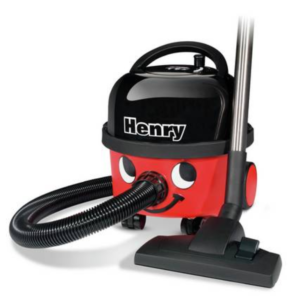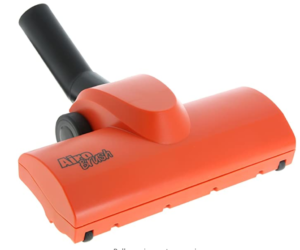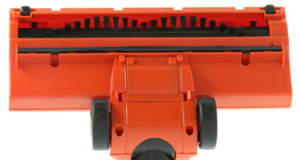I have to confess to being rather late in discovering the BBC Radio 4 show The Best Thing Since Sliced Bread. Now into its second series where, “Greg Foot and his guests look for the facts behind the fads and search for the scientific evidence behind a product’s bold claims”. I haven’t listened to them all yet, but greatly enjoyed the episode on Noise Cancelling Headphones.
I was looking forward to a future episode on vacuum cleaners that can cope with pet hair. Why – because I have spent far too much time researching the best one to buy to deal with the masses of hair our border collie Misty sheds.
As you can see from this review of specialist cleaners, the recommended models were the Miele Complete C3 Cat and Dog PowerLine at £250, the Shark Corded Stick at £269, and the Dyson Ball Animal 2 at £300. The one thing they have in common is that they are pretty expensive.
 I was reluctant to spend that much money, and actually am still quite attached to my old Henry hoover. I’ve had a Henry for around 20 years and found it pretty much indestructible. As well as standard house cleaning duties over the years, he has cleared out several lofts. And on one occasion was pressed into service by our local tennis club to hoover up dead moss from the courts.
I was reluctant to spend that much money, and actually am still quite attached to my old Henry hoover. I’ve had a Henry for around 20 years and found it pretty much indestructible. As well as standard house cleaning duties over the years, he has cleared out several lofts. And on one occasion was pressed into service by our local tennis club to hoover up dead moss from the courts.
So imagine my delight when I discovered by chance the Airo (or in full, the Universal Airo Turbo Brush Floor Tool for Numatic Henry Vacuum Cleaners). At just £11.99 including free delivery it seemed to good to be true. But it had 4.3 stars from over one thousand reviewers with many raving about how great it was at removing pet hair.
A few days later it arrived, and has certainly lived up to its billing. Not only does it pick up Misty’s hair from the carpet, it has sped up my house cleaning significantly as well as taking a lot of the effort out of it. As you can imagine I am now a big fan of the Airo. I love the fact that it just uses the sucking power of the Henry to drive the brushes. So there aren’t any cables or electrics involved to add unwanted complications.
The turbo part of the name reminded me of the time in the early 1980’s when the big four Japanese motorbike manufacturers (Honda, Yamaha, Suzuki and Kawasaki), briefly jumped onto the turbo bandwagon (Factory Turbocharged Motorcycles). All four bikes were something of a disaster. They were too complicated making them unreliable. More significantly they didn’t add any benefits that just having a bigger engine would offer. So they weren’t at all popular with the bikers of the day, and disappeared after a couple of years.
The companies were lured in by the idea that they could magically boost the power of the bikes by the ‘simple’ step of just bolting on a turbocharger. As they discovered things are rarely that straightforward. Perhaps they would have been better off going down the Nitrous Oxide injection route instead.

